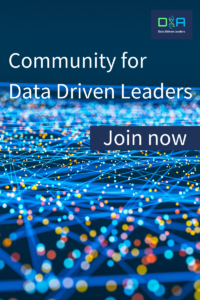Successful and value-added data governance is a balancing act: it requires the use of best practices, dealing with complex data landscapes and structures, and managing teams with specialized skills and knowledge. But how can this challenge be effectively met without running into the typical pitfalls of applying data governance?
One possible solution lies in an innovative organizational approach: team topologies.
Team topologies enable more effective team collaboration, more expeditious information sharing, and more informed decision-making. The result? A value-added and agile data management.
If you’re looking for ways to take your data management to the next level, or you want to improve collaboration and communication within your teams, you’ve come to the right place. In this article, you’ll find out how team topologies can revolutionize your data organization.
Data and Management: Challenges in Practice
Dealing with data is an indispensable aspect of managing modern organizations. Nevertheless, its effective governance and use often prove to be a complex undertaking. First, the challenge lies in the increasing volume of data and the heterogeneity of data sources. This significantly complicates data management and control.
Furthermore, managing data is not only a technological task, but also an organizational one. It requires successful coordination and collaboration between different teams and stakeholders. Here, priorities, goals, and perspectives often differ, making it difficult to establish effective work processes and communication structures.
Another key aspect is the clear definition of roles – such as the role of a data architect or the role of a master data manager – and their responsibilities in the context of the data organization. Without clear structures, misunderstandings and conflicts can arise, negatively impacting data management efficiency and business processes.
Given these challenges, implementing effective data management and data governance practices sometimes seems daunting. However, it is a critical factor in the success of data-driven organizations, and strategies exist to overcome these challenges. One promising strategy is to apply innovative collaboration models and team structures.
The Revolution of Team Organization through Team Topologies
In a world increasingly characterized by technology-driven processes and the use of big data, the question arises as to how teams can be effectively organized and structured. This is exactly where Matthew Skelton and Manuel Pais’ team topology model comes in.
Team topologies essentially describe how teams should be structured and arranged within an organization and within a data organization to be able to work together optimally. Four fundamental types of teams can be used for this purpose:
Stream-aligned teams: these teams are focused on end-to-end processes to enable continuous and effective delivery of value-added work products.
Platform teams: they provide a robust and well-defined platform that other teams can leverage to achieve their goals more efficiently.
Complicated subsystem teams: These teams focus on dedicated activities that require special expertise.
Enabler teams: Enabler teams focus on helping other teams perform and even improve their capabilities and work processes.
Choosing the right team configuration can have a significant impact on effectiveness and efficiency. For example, in the context of a data organization, the right team configuration can help improve collaboration, optimize communication, and ultimately generate more value with data.
Data Organization: A Question of Harmonious Interaction
Each of the four team types offers specific benefits that can help increase the efficiency and effectiveness of a data organization.
Stream-aligned teams: These teams are ideal for continuous work, such as ongoing monitoring and maintenance of data. They enable a rapid response to change by maintaining all the skills needed to analyze, adapt, harness, and deliver data, for example. In this way, they ensure continuous adaptation and improvement of a company’s data processes.
Platform teams: Platform teams support other teams by providing them with reliable and well-defined tools and services. For example, in the context of data organization, these teams may provide a data management platform such as SAP MDG or a data quality tool.
Complicated subsystem teams: Some aspects of data management and data governance require specialized knowledge and skills. Complicated subsystem teams may focus in this sense on managing sensitive data, implementing innovative niche technologies, or developing complex algorithms for data analysis.
Enabler teams: Their goal is to improve the skills and knowledge of other teams and help them do their jobs more effectively. In a data organization, for example, such teams may provide training on data quality, workshops on data protection, or advice on specific tools or technologies.
Forms of interaction: It Takes an Orchestra to Play a Symphony.
The way teams interact has a significant impact on the effectiveness and efficiency of data management. Three modes of interaction can be used to shape collaboration.
Collaboration: In this mode, two or more teams work closely together to achieve a common goal. For example, a stream-aligned team that monitors data quality for a business process and another stream-aligned team that maintains the data might collaborate to develop and implement new procedures to sustain data quality assurance.
X-as-a-Service: This is where one team provides a defined service to another team. For example, a platform team might provide a data quality tool as a service to other teams.
Facilitating: This is a special form of collaboration in which one team – usually an enabler team – helps another team improve its capabilities and work processes. For example, an enabler team might provide training on how to use a new data management tool.
Effective Data Organization through Team Topologies: A Composition of Modern Team Structures and Value Stream Flow Orientation
Data is the key to success in the modern business world, and effective data organization is essential to fully leverage this key. The challenges are complex and varied, but the application of team topologies can make an important contribution to overcoming these challenges.
With stream-aligned teams, platform teams, complicated subsystem teams, and enabler teams, as well as the three forms of interaction, the model provides effective collaboration structuring that can lead to greater efficiency, better communication, and ultimately more agile data management. Each of these teams brings specific strengths and capabilities that, when used correctly, can have a significant impact on the success of a data organization and, consequently, the success of the business.
However, the optimal combination and interaction of these teams can vary widely, depending on the size of the organization, the industry, specific requirements, and many other factors. Therefore, careful case-by-case analysis and evaluation are required to determine the optimal structure for each data organization.
If you would like to learn more about how to optimize your data organization based on team topologies, feel free to contact us.


